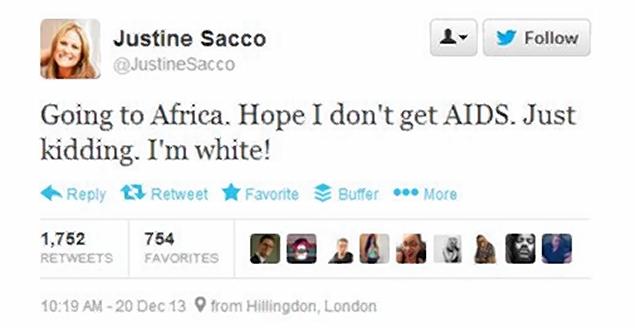Month: December 2013
Justine Sacco, or the misfortunes of virtue
We are driven to online participation because “someone is wrong on the Internet”, to tell it like the classic xkcd cartoon, and by the will to prove that we are right. A moral and semantic shift arises when being right stops meaning that the information we contribute is accurate, and starts signifying our inherent righteousness. There is no denying that those very masses described by some as a justice-hungry lynch mob that today rise up against hate speech are not, statistically speaking, immune from racist and HIV/AIDS stigmatizing remarks. For them, the entire Justine Sacco affair can be regarded as a way to reassert some sort of moral upper hand over a random villain.

Dans Le Monde (12 déc. 2013)
Dans le quotidien Le Monde, David Larousserie propose un aperçu de le recherche française autour des structures sociales en ligne,… read more Dans Le Monde (12 déc. 2013)

[Podcast] Antonio Casilli sur France Info (11 déc. 2013)
A l’occasion de la parution du rapport final du projet de recherche ANAMIA, Antonio A. Casilli (Télécom ParisTech/EHESS) a été… read more [Podcast] Antonio Casilli sur France Info (11 déc. 2013)
![[Notes] Séminaire EHESS A Dalsuet & S Vial — 'Amitié et manifestation d'autrui : pour une philosophie des réseaux sociaux numériques'](https://www.casilli.fr/wp-content/uploads/2013/12/Gear-Philosophy.png)
[Notes] Séminaire EHESS A Dalsuet & S Vial — 'Amitié et manifestation d'autrui : pour une philosophie des réseaux sociaux numériques'
Pour la séance du 16 décembre 2013 de mon séminaire Étudier les cultures du numérique : approches théoriques et empiriques… read more [Notes] Séminaire EHESS A Dalsuet & S Vial — 'Amitié et manifestation d'autrui : pour une philosophie des réseaux sociaux numériques'
